Recommended Reading List
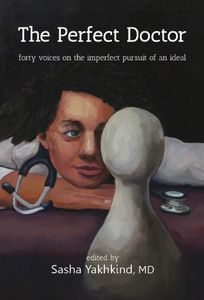
What does it mean to be the perfect doctor? Are you a medical student hoping to be one, a patient who wants to have one, or someone curious about the human side of medicine? This collection of stories offers a glimpse into the diverse lives of doctors and illustrates that there are as many versions of perfect as there are people. The students, doctors, and patients in this book learn what the perfect doctor means to them through loss, humor, and reflection. Their elaborative, insightful, sometimes funny, and always heartfelt narratives can help you decide what the perfect doctor means to you.
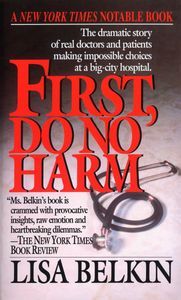
What is life worth? And what is a life worth living? At a time when America faces vital choices about the future of its health care, former NEW YORK TIMES correspondent Lisa Belkin takes a powerful and poignant look at the inner workings of Hermann Hospital in Houston, Texas, telling the remarkable, real-life stories of the doctors, patients, families, and hospital administrators who must ask--and ultimately answer--the most profound and heart-rending questions about life and death.
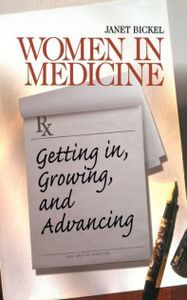
Women in Medicine is a concise, practical resource for anyone considering a medical career, but especially women. Drawing on all the best available literature and the experience of thousands of women doctors, the book covers: getting into medical school; overcoming gender stereotypes; finding a mentor; combining parenting with a career; and maximizing career development. The author also offers tips on building key professional skills, and a self-diagnostic section for readers who are preparing to begin a medical career.
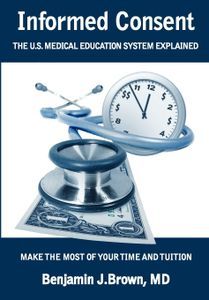
Learn how to make the most of your time and tuition. Informed Consent is the indispensable guidebook for anyone considering or studying toward a career in medicine. Achieving a career as a doctor, nurse or any other role associated with the medical profession is a long, costly and demanding process. Informed Consent, written from an insider’s perspective, will save anyone embarking on this journey a huge amount of time, money and confusion. With a wealth of practical detail and helpful advice, this is the book you need to read if you plan to work in medicine. Covering everything from fees, funding, training, and certification to specialties and professions, nothing you may need to consider is overlooked.
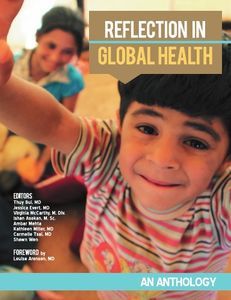
This anthology includes sixty-three essays that explore an array of topics as they relate to global health, and it is the cumulative effort of students, educators, and advocates dedicated to helping others.
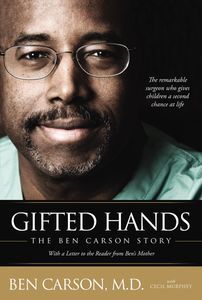
Filled with fascinating case histories, Gifted Hands will transplant you into the operating room to witness surgeries that made headlines around the world, and into the private mind of a compassionate, God-fearing physician who lives to help others. In 1987, Dr. Carson gained worldwide recognition for his part in the first successful separation of Siamese twins joined at the back of the head--an extremely complex and delicate operation that was five months of planning and twenty-two hours of actual surgery, involving a surgical plan that Carson helped initiate.
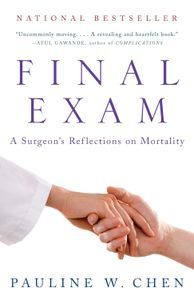
A brilliant transplant surgeon brings compassion and narrative drama to the fearful reality that every doctor must face: the inevitability of mortality.
When Pauline Chen began medical school, she dreamed of saving lives. What she could not predict was how much death would be a part of her work. Almost immediately, she found herself wrestling with medicine’s most profound paradox—that a profession premised on caring for the ill also systematically depersonalizes dying. Final Exam follows Chen over the course of her education and practice as she struggles to reconcile the lessons of her training with her innate sense of empathy and humanity. A superb addition to the best medical literature of our time.
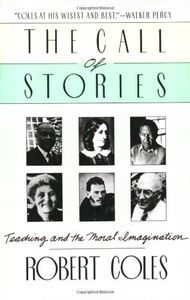
The Call of Stories presents a study of how listening to stories promotes learning and self-discovery.
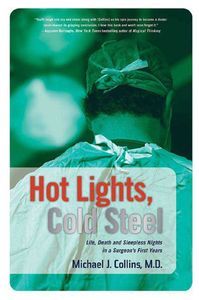
This story of Collins' four-year surgical residency traces his rise from an eager but clueless first-year resident to accomplished Chief Resident in his final year. With unparalleled humor, he recounts the disparity between people's perceptions of a doctor's glamorous life and the real thing: a succession of run down cars that are towed to the junk yard, long weekends moonlighting at rural hospitals, a family that grows larger every year, and a laughable income.
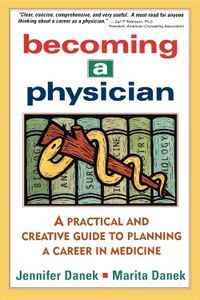
Here, at last, is the book that will help you realize your dream of a career in medicine. Whether your goal is to work in a busy city hospital ER, as a country doctor, or in research, here you'll find innovative ways to actively plan and tailor your medical school education to meet your specific needs. Explore your many options with:
- Straight facts on the medical school admissions process
- Up-to-date information on the MCAT
- Advice on selecting the right medical school
- The current medical trends and the most attractive specialties
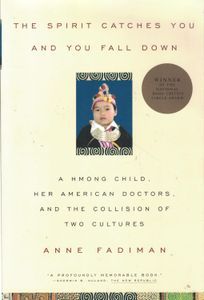
The Spirit Catches You and You Fall Down: A Hmong Child, Her American Doctors, and the Collision of Two Cultures is a 1997 book by Anne Fadiman that chronicles the struggles of a Hmong refugee family from Houaysouy, Sainyabuli Province, Laos, the Lees, and their interactions with the health care system in Merced, California.
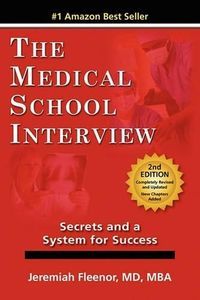
The fully revised The Medical School Interview will show you how to: Address bad grades, including GPA or MCAT What to wear Deal with and how to address ethical questions 3 things you MUST convey in every interview Create a step-by-step process for preparing your responses Respond to the 6 "high-yield" questions every interviewer asks Deliver what Admissions Committees want, including your Personal Statement Identify and deal with the question behind the question More than 40 actual questions used by Admission Committees. The Medical School Interview offers explanations of the Admissions Committee Process and their Agendas. Where other books just offer tips or outlines, The Medical School Interview provides a formula that delivers the secrets and a system for your success.
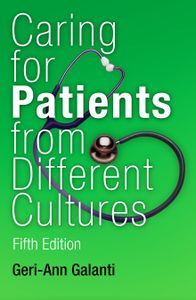
Now in its fifth edition, Caring for Patients from Different Cultures covers a wide range of topics, including birth, end of life, communication, traditional medicine, mental health, pain, religion, and multicultural staff challenges. This edition includes more than sixty new cases, introduces a new chapter on improving adherence, and updates the concluding chapter with examples of changes various hospitals have made to accommodate cultural differences. Grounded in concepts from the fields of cultural diversity and medical anthropology, Caring for Patients from Different Cultures provides healthcare workers with a frame of reference for understanding cultural differences and sound alternatives for providing the best possible care to multicultural communities.
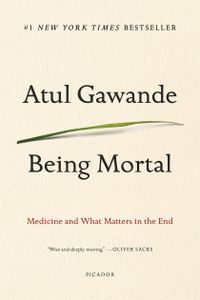
Gawande, a practicing surgeon, addresses his profession's ultimate limitation, arguing that quality of life is the desired goal for patients and families. Gawande offers examples of freer, more socially fulfilling models for assisting the infirm and dependent elderly, and he explores the varieties of hospice care to demonstrate that a person's last weeks or months may be rich and dignified.
Full of eye-opening research and riveting storytelling, Being Mortal asserts that medicine can comfort and enhance our experience even to the end, providing not only a good life but also a good end.
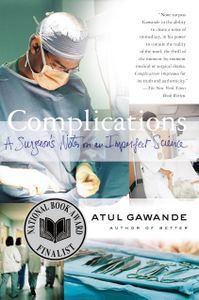
Atul Gawande offers an unflinching view from the scalpel's edge, where science is ambiguous, information is limited, the stakes are high, yet decisions must be made. In dramatic and revealing stories of patients and doctors, he explores how deadly mistakes occur and why good surgeons go bad. He also shows us what happens when medicine comes up against the inexplicable: an architect with incapacitating back pain for which there is no physical cause; a young woman with nausea that won't go away; a television newscaster whose blushing is so severe that she cannot do her job. Gawande offers a richly detailed portrait of the people and the science, even as he tackles the paradoxes and imperfections inherent in caring for human lives.
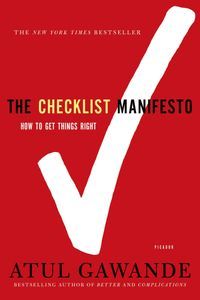
In riveting stories, Gawande takes us from Austria, where an emergency checklist saved a drowning victim who had spent half an hour underwater, to Michigan, where a cleanliness checklist in intensive care units virtually eliminated a type of deadly hospital infection. He explains how checklists actually work to prompt striking and immediate improvements. And he follows the checklist revolution into fields well beyond medicine, from disaster response to investment banking, skyscraper construction, and businesses of all kinds.
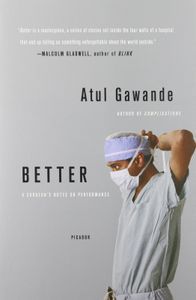
In riveting stories, Gawande takes us from Austria, where an emergency checklist saved a drowning victim who had spent half an hour underwater, to Michigan, where a cleanliness checklist in intensive care units virtually eliminated a type of deadly hospital infection. He explains how checklists actually work to prompt striking and immediate improvements. And he follows the checklist revolution into fields well beyond medicine, from disaster response to investment banking, skyscraper construction, and businesses of all kinds.
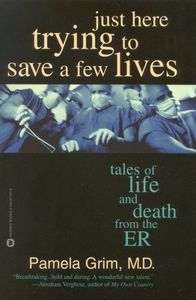
An emergency medicine physician for nearly a decade, Dr. Pamela Grim has delivered babies, treated heart attacks, saved car accident victims, comforted the dying, and consoled the living who were left behind. She has worked all over the world, caring for victims of gang life in America's inner cities, victims of the war in Bosnia, poverty-stricken patients in Nigeria, and bank presidents in the United States. Relating these rich and varied experiences with compelling prose, Dr. Grim takes readers into the E.R. and lets them experience first-hand what it takes to make split-second, life-and-death decisions in the course of an average day. And with unflinching honesty, she conveys what it's like to be a caring physician with one of the most demanding, exhilarating, frustrating, and rewarding jobs in the world.
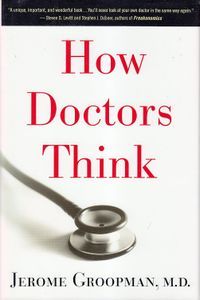
On average, a physician will interrupt a patient describing her symptoms within eighteen seconds. In that short time, many doctors decide on the likely diagnosis and best treatment. Often, decisions made this way are correct, but at crucial moments they can also be wrong—with catastrophic consequences. In this myth-shattering book, Jerome Groopman pinpoints the forces and thought processes behind the decisions doctors make. Groopman explores why doctors err and shows when and how they can—with our help—avoid snap judgments, embrace uncertainty, communicate effectively, and deploy other skills that can profoundly impact our health. This book is the first to describe in detail the warning signs of erroneous medical thinking and reveal how new technologies may actually hinder accurate diagnoses. How Doctors Think offers direct, intelligent questions patients can ask their doctors to help them get back on track.
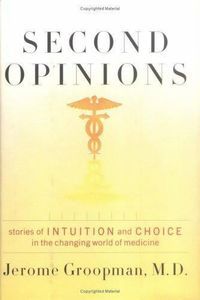
Explores the art and science of the decision-making process amid the complexities of contemporary medicine and describes how such factors as the realities of medical politics and patient intuition play a key role in critical medical decisions.
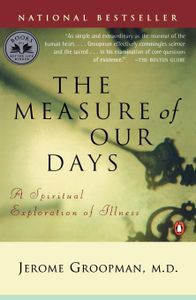
With The Measure of Our Days, Dr. Jerome Groopman established himself as an eloquent new voice in the literature of medicine. In these eight moving portraits, he offers us a compelling look at what is to be learned when life itself can no longer be taken for granted.
These stories are diverse--from Kirk, an aggressive venture capitalist determined to play the odds with controversial chemotherapy treatments; to Elizabeth, an imperious dowager humbled by a rare blood disease; to Elliott, who triumphs over leukemia and creates for himself a definition of success--but each, in the words of Maggie Scarf, "transmute the misery of terrible suffering into a marvelous celebration of the sweetness of human life." Far from medical case studies, these are spiritual journeys of questioning and self-awareness, embarked on by the physician as well as the patient.
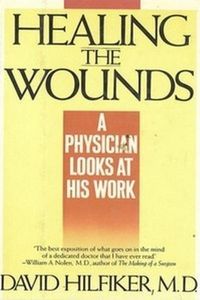
Dr. Hilfiker uses incidents from his own practice to examine many of the kinds of behavior for which doctors are criticized—aloofness, authoritarianism, lack of caring, and money. With compassion for doctor and patient alike, he shows how the stresses of medical practice lead to a climate of misunderstanding and hostility in which the goal of healing is the first casualty.
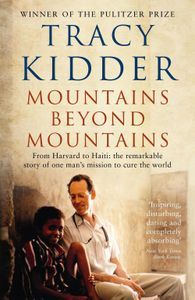
In medical school, Paul Farmer found his life’s calling: to cure infectious diseases and to bring the lifesaving tools of modern medicine to those who need them most. Tracy Kidder’s magnificent account shows how one person can make a difference in solving global health problems through a clear-eyed understanding of the interaction of politics, wealth, social systems, and disease. Profound and powerful, Mountains Beyond Mountains takes us from Harvard to Haiti, Peru, Cuba, and Russia as Farmer changes people’s minds through his dedication to the philosophy that “the only real nation is humanity.”
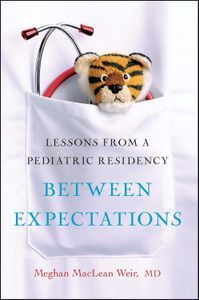
Dr. Weir’s thoughtful prose reveals how exhaustion and doubt define the residency experience just as much as confidence and action do. Yet the most important lesson that she learns through the months and years of residency is that having a good day on the floor does not always mean that a patient goes home miraculously healed—more often than not, success is about a steady, gradual discovery of strength. By observing the children, the parents, and other hospital staff who painstakingly provide care each day, Dr. Weir finds herself finally developing into the physician (and the parent) she hopes to become. These stories—sometimes funny, sometimes haunting—expose the humanity that is so often obscured by the doctor’s white coat.
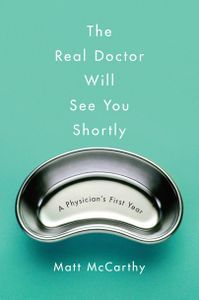
The Real Doctor Will See You Shortly offers a window on to hospital life that dispenses with sanctimony and self-seriousness while emphasizing the black-comic paradox of becoming a doctor: How do you learn to save lives in a job where there is no practice?
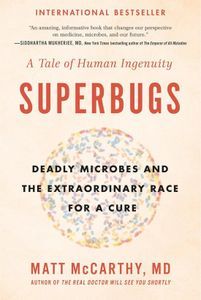
Dr. McCarthy explores the history of bacteria and antibiotics, from Alexander Fleming's discovery of penicillin, to obscure sources of innovative new medicines (often found in soil samples), to the cutting-edge DNA manipulation known as CRISPR, bringing to light how we arrived at this juncture of both incredible breakthrough and extreme vulnerability. We also meet the patients whose lives are hanging in the balance, from Remy, a teenager with a dangerous and rare infection, to Donny, a retired New York City firefighter with a compromised immune system, and many more.
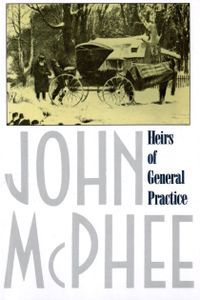
Heirs of General Practice is a frieze of glimpses of young doctors with patients of every age—about a dozen physicians in all, who belong to the new medical specialty called family practice. They are people who have addressed themselves to a need for a unifying generalist in a world that has become greatly subdivided by specialization, physicians who work with the "quantifiable idea that a doctor who treats your grandmother, your father, your niece, and your daughter will be more adroit in treating you."
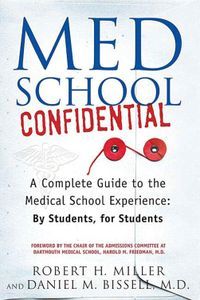
Med School Confidential from Robert H. Miller and Daniel M. Bissell uses the same chronological format and mentor-based system that have made Law School Confidential and Business School Confidential such treasured and popular guides. It takes the reader step-by-step through the entire med school process--from thinking about, applying to, and choosing a medical school and program, through the four-year curriculum, internships, residencies, and fellowships, to choosing a specialty and finding the perfect job.
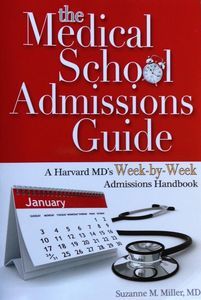
This is the newly updated 2nd Edition of Dr. Suzanne M. Miller's acclaimed Medical School Admissions Guide. This guide contains the weekly, step-by-step plan Dr. Miller used to get into Harvard Medical School. She has since utilized the strategy to help hundreds of applicants gain entry into medical school first as a Harvard pre-med tutor and then as CEO of MDadmit, a medical school admissions consulting service. Following this handbook's advice will provide you a distinct advantage in the competitive medical school admissions process as it prepares you for every step and helps create your best application.
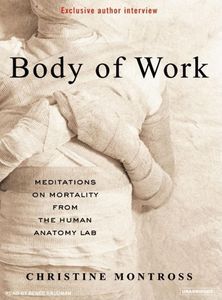
Medical student Christine Montross felt nervous standing outside the anatomy lab on her first day of class. Entering a room with stainless-steel tables topped by corpses in body bags was initially unnerving. But once Montross met her cadaver, she found herself intrigued by the person the woman once was and fascinated by the strange, unsettling beauty of the human form. They called her Eve. The story of Montross and Eve is a tender and surprising examination of the mysteries of the human body, and a remarkable look at our relationship with both the living and the dead.
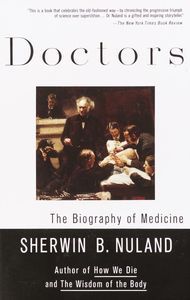
How does medical science advance? Popular historians would have us believe that a few heroic individuals, possessing superhuman talents, lead an unselfish quest to better the human condition. But as renowned Yale surgeon and medical historian Sherwin B. Nuland shows in this brilliant collection of linked life portraits, the theory bears little resemblance to the truth. Through the centuries, the men and women who have shaped the world of medicine have been not only very human, but also very much the products of their own times and places.
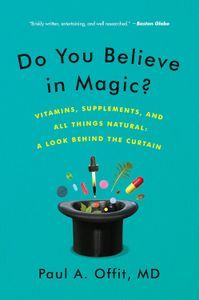
In Do You Believe in Magic?, Paul Offit, M.D., reveals how alternative medicine—an unregulated industry under no legal obligation to prove its claims or admit its risks—can actually be harmful to our health.
Using dramatic real-life stories, Offit separates the sense from the nonsense, showing why any therapy—alternative or traditional—should be scrutinized. He also shows how some nontraditional methods can do a great deal of good, in some cases exceeding therapies offered by conventional practitioners.
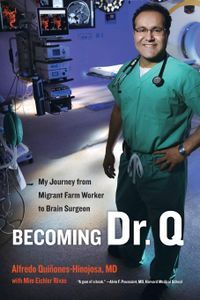
Today he is known as Dr. Q, an internationally renowned neurosurgeon and neuroscientist who leads cutting-edge research to cure brain cancer. But not too long ago, he was Freddy, a nineteen-year-old undocumented migrant worker toiling in the tomato fields of central California. In this gripping memoir, Alfredo Quiñones-Hinojosa tells his amazing life story--from his impoverished childhood in the tiny village of Palaco, Mexico, to his harrowing border crossing and his transformation from illegal immigrant to American citizen and gifted student at the University of California at Berkeley and at Harvard Medical School. Packed with adventure and adversity--including a few terrifying brushes with death--Becoming Dr. Q is a testament to persistence, hard work, the power of hope and imagination, and the pursuit of excellence.
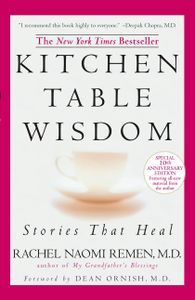
This remarkable collection of true stories draws on the concept of "kitchen table wisdom"-- the human tradition of shared experience that shows us life in all its power and mystery and reminds us that the things we cannot measure may be the things that ultimately sustain and enrich our lives.
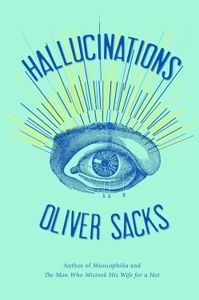
To many people, hallucinations imply madness, but in fact they are a common part of the human experience. These sensory distortions range from the shimmering zigzags of a visual migraine to powerful visions brought on by fever, injuries, drugs, sensory deprivation, exhaustion, or even grief. Hallucinations doubtless lie behind many mythological traditions, literary inventions, and religious epiphanies. Drawing on his own experiences, a wealth of clinical cases from among his patients, and famous historical examples ranging from Dostoevsky to Lewis Carroll, the legendary neurologist Oliver Sacks investigates the mystery of these sensory deceptions: what they say about the working of our brains, how they have influenced our folklore and culture, and why the potential for hallucination is present in us all.
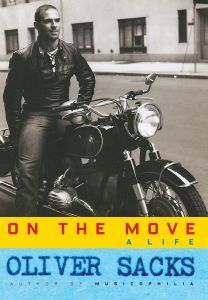
When Oliver Sacks was twelve years old, a perceptive schoolmaster wrote: “Sacks will go far, if he does not go too far.” It is now abundantly clear that Sacks has never stopped going. With unbridled honesty and humor, Sacks writes about the passions that have driven his life—from motorcycles and weight lifting to neurology and poetry. He writes about his love affairs, both romantic and intellectual; his guilt over leaving his family to come to America; his bond with his schizophrenic brother; and the writers and scientists—W. H. Auden, Gerald M. Edelman, Francis Crick—who have influenced his work. On the Move is the story of a brilliantly unconventional physician and writer, a man who has illuminated the many ways that the brain makes us human.
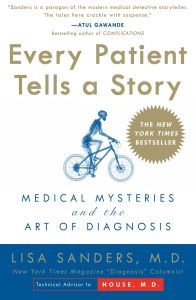
A healthy young man suddenly loses his memory—making him unable to remember the events of each passing hour. Two patients diagnosed with Lyme disease improve after antibiotic treatment—only to have their symptoms mysteriously return. A young woman lies dying in the ICU—bleeding, jaundiced, incoherent—and none of her doctors know what is killing her. In Every Patient Tells a Story, Dr. Lisa Sanders takes us bedside to witness the process of solving these and other diagnostic dilemmas, providing a firsthand account of the expertise and intuition that lead a doctor to make the right diagnosis.
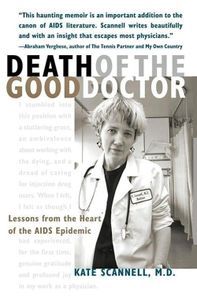
Working with AIDS patients, nearly all of whom were dying, Scannell discovered the inadequacy of the "good doctor" who battles illness to keep patients alive regardless of their suffering. By embracing her patients’ unique needs and stories, Scannell reached an expanded understanding of her patients and of herself as a physician.
Death of the Good Doctor richly chronicles the intimacy of Scannell’s relationships with her patients through whom the vast complexities of the AIDS epidemic are uniquely focused. It is through these beautiful, often difficult, and sometimes humorous portraits that the woman and the physician discover each other.
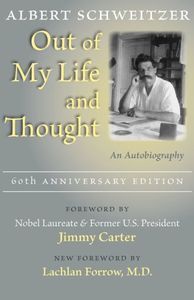
Published to commemorate Albert Schweitzer’s only visit to the United States 60 years ago, this anniversary edition of his autobiography gives 21st-century readers a unique and authoritative account of the man John F. Kennedy called "one of the transcendent moral influences of our century."
Schweitzer is celebrated around the world as a European pioneer of medical service in Africa, a groundbreaking philosopher and musical scholar, and a catalyst of environmental and peace activism. Yet people most revere Schweitzer for his dedication to serving others and his profound and influential ethic of reverence for life. For Schweitzer, reverence for life was not a theory or a philosophy but a discovery―a recognition that the capacity to experience and act on a reverence for all life is a fundamental part of human nature, a characteristic that sets human beings apart from the rest of the natural world.
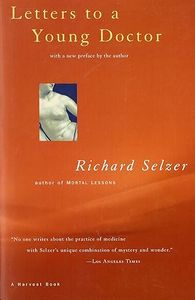
In this collection of highly candid, insightful, and unexpectedly humorous essays, the erstwhile surgeon turned Yale School of Medicine professor addresses both the brutality and the beauty of a profession in which saving and losing lives is all in a day’s work. A number of these pieces take the form of letters offering counsel to aspiring physicians. Featuring wry and witty observations on matters of life and death, medical ethics, and the awesome responsibilities of being a surgeon, Letters to a Young Doctor should be required reading for all medical students—and anyone interested in the endless miracle that is the human body.
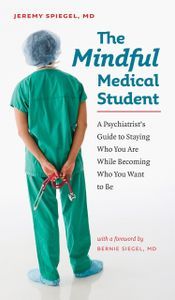
Four years in medical school are not only demanding and competitive in a strictly academic sense, but they may bring students face-to-face with perfectionism, anxiety, obsessions, power plays, difficult patients, ethical dilemmas, identity crises, sleep deprivation, financial strain, and―perhaps for the first time in their lives―confrontations with disease, suffering, and death. The Mindful Medical Student will broaden readers’ perspectives and cultivate their ability to respond to the extreme emotional, psychological, and spiritual challenges posed by medical school and, eventually, a medical career. Jeremy Spiegel, MD, tackled these issues head on, prevailed, and became a first-rate psychiatrist. Now, in a vital book, he shares what he has learned.
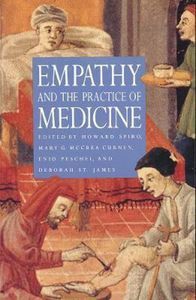
A collection of essays--written by physicians, philosophers, and a nurse--seeks to restore empathy to medical practice, describing how empathy is lost during a medical education and how this can be remedied.
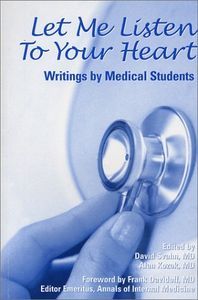
A compelling collection of essays, poems and stories by medical students reflecting on their early experience in clinical medicine and describing the lessons in humanity learned as they first venture into the clinic to learn to practice primary care medicine under the tutelage of dedicated teachers.
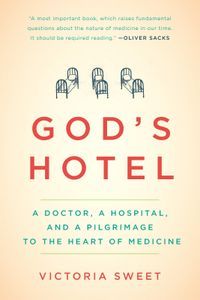
Laguna Honda, relatively low-tech but human-paced, gave Sweet the opportunity to practice a kind of attentive medicine that has almost vanished. Gradually, the place transformed the way she understood her work. Alongside the modern view of the body as a machine to be fixed, her extraordinary patients evoked an older idea, of the body as a garden to be tended. God’s Hotel tells their story and the story of the hospital itself, which, as efficiency experts, politicians, and architects descended, determined to turn it into a modern “health care facility,” revealed its own surprising truths about the essence, cost, and value of caring for the body and the soul.
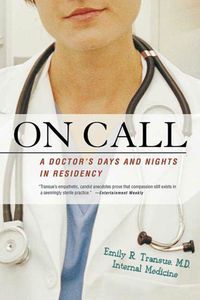
On Call begins with a newly-minted doctor checking in for her first day of residency--wearing the long white coat of an MD and being called "Doctor" for the first time. Having studied at Yale and Dartmouth, Dr. Emily Transue arrives in Seattle to start her internship in Internal Medicine just after graduating from medical school. This series of loosely interconnected scenes from the author's medical training concludes her residency three years later.
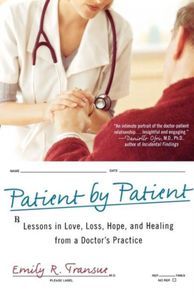
Patient by Patient is the memoir of a young doctor, fresh from residency, as she explores the joys and frustrations of beginning her medical practice. As she strives to help her patients face a range of challenges from the humorous to the profoundly devastating she learns that while medical school gave her an M.D., treating patients has made her a doctor.
At the same time she is working with her patients she is also struggling with illness in her own family. Through her shifting perspectives of doctor, daughter, and granddaughter, she contents with the process of dying, the experience of grief, and the buoyancy of the human spirit.
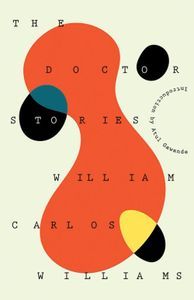
The Doctor Stories collects thirteen of Williams’s stories (direct accounts of his experiences as a doctor), six related poems, and a chapter from his autobiography that connects the world of medicine and writing, as well as a new preface by Atul Gawande, an introduction by Robert Coles (who put the book together), and a final note by Williams’s son (also a doctor), about his famous father. The writings are remarkably direct and freshly true. As Atul Gawande notes, “Reading these tales,you find yourself in a conversation with Williams about who people really are―who you really are. Williams recognized that, caring for the people of his city, he had a front-row seat to the human condition. His writing makes us see it and hear it and grapple with it in all its complexities. That is his lasting gift.”
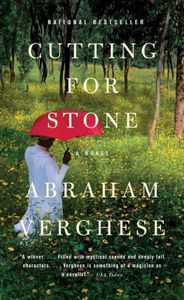
Marion and Shiva Stone are twin brothers born of a secret union between a beautiful Indian nun and a brash British surgeon. Orphaned by their mother’s death and their father’s disappearance, bound together by a preternatural connection and a shared fascination with medicine, the twins come of age as Ethiopia hovers on the brink of revolution.
Moving from Addis Ababa to New York City and back again, Cutting for Stone is an unforgettable story of love and betrayal, medicine and ordinary miracles--and two brothers whose fates are forever intertwined.
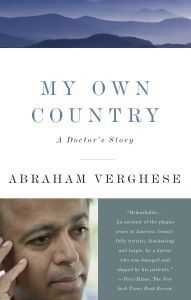
Working in Johnson City was Abraham Verghese, a young Indian doctor specializing in infectious diseases. Dr. Verghese became by necessity the local AIDS expert, soon besieged by a shocking number of male and female patients whose stories came to occupy his mind, and even take over his life. Verghese brought a singular perspective to Johnson City: as a doctor unique in his abilities; as an outsider who could talk to people suspicious of local practitioners; above all, as a writer of grace and compassion who saw that what was happening in this conservative community was both a medical and a spiritual emergency.
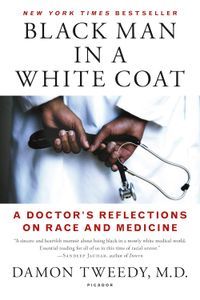
Black Man in a White Coat examines the complex ways in which both black doctors and patients must navigate the difficult and often contradictory terrain of race and medicine. As Tweedy transforms from student to practicing physician, he discovers how often race influences his encounters with patients. Through their stories, he illustrates the complex social, cultural, and economic factors at the root of many health problems in the black community. These issues take on greater meaning when Tweedy is himself diagnosed with a chronic disease far more common among black people. In this powerful, moving, and deeply empathic book, Tweedy explores the challenges confronting black doctors, and the disproportionate health burdens faced by black patients, ultimately seeking a way forward to better treatment and more compassionate care.
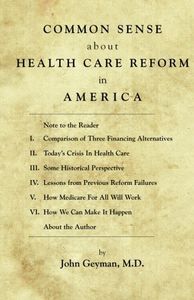
In the same way that Thomas Paine made a strong argument in his pamphlet, Common Sense, for people in the Thirteen Colonies to gain independence from England in 1775-1776, this pamphlet takes a similar approach, also based on simple facts, plain arguments, and common sense. Here, 241 years later, the subject is different but parallel to his goal—to have the American people gain freedom from the corporate masters in our medical-industrial complex that take their exorbitant profits on the backs of sick Americans, their families, and taxpayers. We detail markers of today’s health care crisis, summarize lessons we can learn from previous reform failures, and compare three financing alternatives: (1) the Affordable Care Act, (2) the GOP’s American Health Care Act, and (3) national health insurance under Medicare for All.
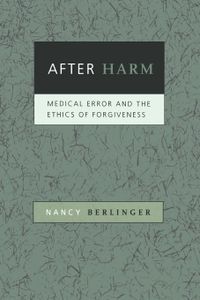
In After Harm, Berlinger draws on sources in theology, ethics, religion, and culture to create a practical and comprehensive approach to addressing the needs of patients, families, and clinicians affected by medical error. She emphasizes the importance of acknowledging fallibility, telling the truth, confronting feelings of guilt and shame, and providing just compensation. After Harm adds important human dimensions to an issue that has profound consequences for patients and health care providers.
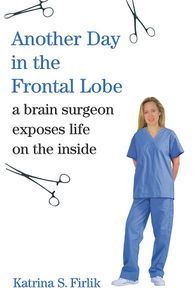
Katrina Firlik is a neurosurgeon, one of only two hundred or so women among the alpha males who dominate this high-pressure, high-prestige medical specialty. She is also a superbly gifted writer–witty, insightful, at once deeply humane and refreshingly wry. In Another Day in the Frontal Lobe, Dr. Firlik draws on this rare combination to create a neurosurgeon’s Kitchen Confidential–a unique insider’s memoir of a fascinating profession.
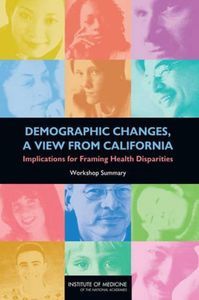
The IOM held a workshop on July 28, 2008, to examine strategies for discussing health disparities in ways that engage the public and motivate change. Speakers focused on health disparities in California, which continues to see dramatic demographic shifts.
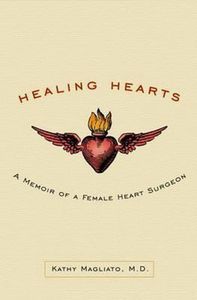
Dr. Kathy Magliato is one of the few female heart surgeons practicing in the world today. She is also a member of an even more exclusive group—those surgeons specially trained to perform heart transplants. Heart Matters is the story of the making of a surgeon who is also a wife and mother. In this powerful and moving memoir, Dr. Magliato takes us into her highly demanding, physically intense, male-dominated world and shows us how she masterfully works to save patients' lives every day, while also maintaining balance at home. Heart Matters is also a wake-up call to all women about their number one killer - heart disease - and explains how to avoid becoming a victim.
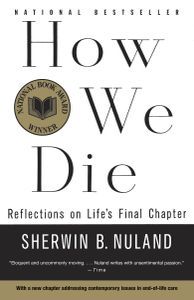
A runaway bestseller and National Book Award winner, Sherwin Nuland's How We Die has become the definitive text on perhaps the single most universal human concern: death. This new edition includes an all-embracing and incisive afterword that examines the current state of health care and our relationship with life as it approaches its terminus. It also discusses how we can take control of our own final days and those of our loved ones.
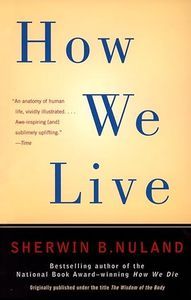
How We Live is filled with gripping medical case histories: a woman is pulled back from the brink of death from inexplicable internal bleeding; another patient triumphs over breast cancer; the "routine" removal of a polyp triggers a nearly lethal medical crisis. For Nuland, each of these cases serves to illustrate the extraordinary responsiveness and adaptability of the human organism. We learn how the aorta's baroreceptors monitor blood pressure and respond to its minutest fluctuations. We follow the intricate chain of electrochemical command that makes us leap out of the path of a speeding car. We discover why the stomach—which is capable of breaking down everything from porridge to pizza—refrains from digesting itself.
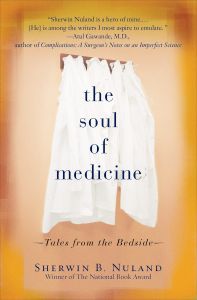
From one of America's most renowned and beloved doctors, and best-selling winner of the National Book Award, comes a remarkable book that brings together the stories of doctors collected over 30 years. Each of these tales, filled with grace and wisdom, explores the mysteries and conundrums of modern medicine. Enhanced by Sherwin Nuland's keen insight into the special relationship between doctor and patient, these engrossing stories illustrate the judgment, wisdom, and character of veteran doctors who have mastered the art of care-giving. Taken together, the lessons learned from The Soul of Medicine are as moving and profound as they are timeless.
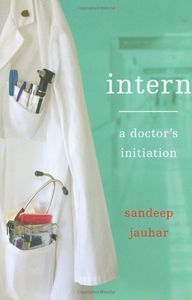
Intern is Dr. Sandeep Jauhar's story of his days and nights in residency at a busy hospital in New York City, a trial that led him to question his every assumption about medical care today. Residency―and especially its first year, the internship―is legendary for its brutality, and Jauhar's experience was even more harrowing than most. He switched from physics to medicine in order to follow a more humane calling―only to find that his new profession often had little regard for patients' concerns. He struggled to find a place among squadrons of cocky residents and doctors. He challenged the practices of the internship in The New York Times, attracting the suspicions of the medical bureaucracy. Then, suddenly stricken, he became a patient himself―and came to see that today's high-tech, high-pressure medicine can be a humane science after all.
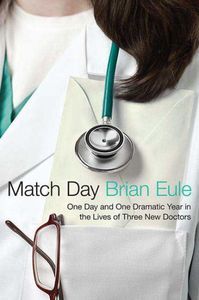
In Match Day, Brian Eule follows three women from the anxious months before the match through the completion of their first year of internship. Each woman makes mistakes, saves lives, and witnesses death; each must keep or jettison the man in her life; each comes to learn what it means to heal, to comfort, to lose, and to grieve, while maintaining a professional demeanor.
Just as One L became the essential book about the education of young attorneys, so Match Day will be for every medical student, doctor, and reader interested in medicine: a guide to what to expect, and a dramatic recollection of a pressured, perilous, challenging, and rewarding time of life.
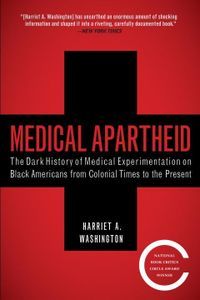
The product of years of prodigious research into medical journals and experimental reports long undisturbed, Medical Apartheid reveals the hidden underbelly of scientific research and makes possible, for the first time, an understanding of the roots of the African American health deficit. At last, it provides the fullest possible context for comprehending the behavioral fallout that has caused Black Americans to view researchers—and indeed the whole medical establishment—with such deep distrust.
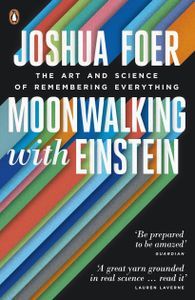
An instant bestseller that is poised to become a classic, Moonwalking with Einstein recounts Joshua Foer's yearlong quest to improve his memory under the tutelage of top "mental athletes." He draws on cutting-edge research, a surprising cultural history of remembering, and venerable tricks of the mentalist's trade to transform our understanding of human memory. From the United States Memory Championship to deep within the author's own mind, this is an electrifying work of journalism that reminds us that, in every way that matters, we are the sum of our memories.
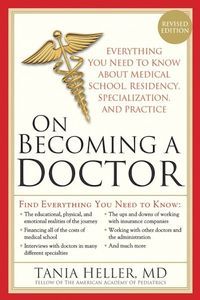
Becoming a doctor is so much more than acing your MCATs, living through med school, then getting the perfect residency. It is a career that demands long hours on little to no sleep, constant continuing education, and a tough decision about which of the many types of medicine you want to practice. But with the right guide, you can make the right choices each step of the way.
On Becoming a Doctor calmly and thoroughly walks you through each academic, physical, and emotional step you'll take on your way to a successful career in medicine, and it includes interviews with many different specialists to help you choose a medical path.
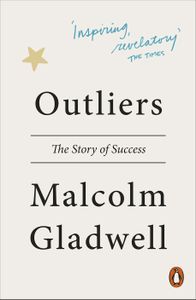
In this stunning new book, Malcolm Gladwell takes us on an intellectual journey through the world of "outliers"--the best and the brightest, the most famous and the most successful. He asks the question: what makes high-achievers different?
His answer is that we pay too much attention to what successful people are like, and too little attention to where they are from: that is, their culture, their family, their generation, and the idiosyncratic experiences of their upbringing. Along the way he explains the secrets of software billionaires, what it takes to be a great soccer player, why Asians are good at math, and what made the Beatles the greatest rock band.
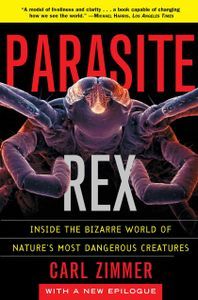
For centuries, parasites have lived in nightmares, horror stories, and the darkest shadows of science. In Parasite Rex, Carl Zimmer takes readers on a fantastic voyage into the secret universe of these extraordinary life-forms—which are not only among the most highly evolved on Earth, but make up the majority of life’s diversity. Traveling from the steamy jungles of Costa Rica to the parasite-riddled war zone of southern Sudan, Zimmer introduces an array of amazing creatures that invade their hosts, prey on them from within, and control their behavior. He also vividly describes parasites that can change DNA, rewire the brain, make men more distrustful and women more outgoing, and turn hosts into the living dead.
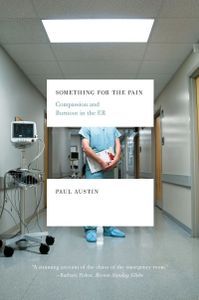
In this eye-opening account of life in the ER, Paul Austin recalls how the daily grind of long, erratic shifts and endless hordes of patients with sad stories sent him down a path of bitterness and cynicism. Gritty, powerful, and ultimately redemptive, Something for the Pain is a revealing glimpse into the fragility of compassion and sanity in the industrial setting of today’s hospitals.
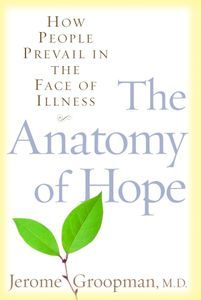
Why do some people find and sustain hope during difficult circumstances, while others do not? What can we learn from those who do, and how is their example applicable to our own lives? The Anatomy of Hope is a journey of inspiring discovery, spanning some thirty years of Dr. Jerome Groopman’s practice, during which he encountered many extraordinary people and sought to answer these questions.
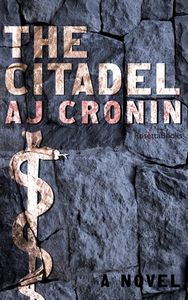
The Citadel follows the life of Andrew Manson, a young and idealistic Scottish doctor, as he navigates the challenges of practicing medicine across interwar Wales and England. Based on Cronin's own experiences as a physician, The Citadel boldly confronts traditional medical ethics, and has been noted as one of the inspirations for the formation of the National Health Service.
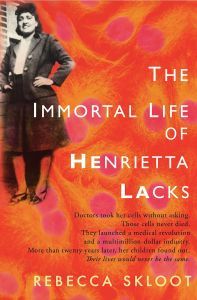
Her name was Henrietta Lacks, but scientists know her as HeLa. She was a poor Southern tobacco farmer who worked the same land as her slave ancestors, yet her cells—taken without her knowledge—became one of the most important tools in medicine: The first “immortal” human cells grown in culture, which are still alive today, though she has been dead for more than sixty years. HeLa cells were vital for developing the polio vaccine; uncovered secrets of cancer, viruses, and the atom bomb’s effects; helped lead to important advances like in vitro fertilization, cloning, and gene mapping; and have been bought and sold by the billions.
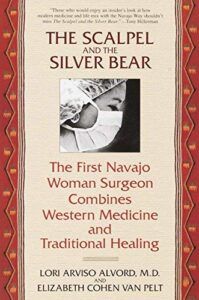
Dr. Alvord left a dusty reservation in New Mexico for Stanford University Medical School, becoming the first Navajo woman surgeon. Rising above the odds presented by her own culture and the male-dominated world of surgeons, she returned to the reservation to find a new challenge. In dramatic encounters, Dr. Alvord witnessed the power of belief to influence health, for good or for ill. She came to merge the latest breakthroughs of medical science with the ancient tribal paths to recovery and wellness, following the Navajo philosophy of a balanced and harmonious life, called Walking in Beauty.
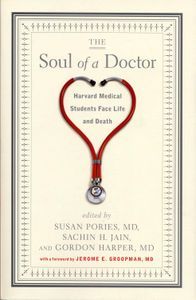
Here are voices of third-year students just as they begin to take on clinical responsibilities. Their words focus on the odd transition students face when they must deal with real people in real time and in real crises and when they must learn to put aside their emotions to make quick, accurate, and sensitive decisions. Their decisions aren’t always right, and the consequences can be life-altering—for all involved. Moving, disturbing, and candid, their true stories show us a side of the profession that few ever see, or could even imagine. They show, often painfully, how medical students grow up, right at the bedside.
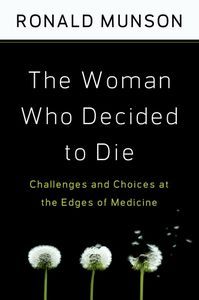
Advances in medical technology force us to struggle with new and often gut-wrenching decisions. How do we know when someone is dead and not just in a coma? Should a convicted felon qualify for a new heart? In The Woman Who Decided to Die, novelist and medical ethicist Ronald Munson takes readers to the very edges of medicine, where treatments fail and where people must cope with helplessness, mortality, and doubt. Using personal narratives that place us right next to doctors, patients, and care givers as they make decisions, Munson explores ten riveting case-based stories, told with a writer's eye for illuminating detail.
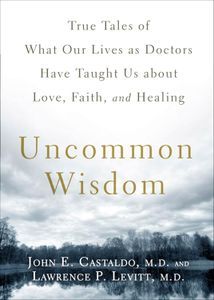
In light of the escalating costs of healthcare in the U.S. and the on-going debate about appropriate health insurance reform, it's easy to forget about the human side of medicine and the importance of the doctor-patient relationship. In Uncommon Wisdom, neurologists John Castaldo and Lawrence Levitt share what they have learned in their many years as doctors, not just from tests and labs, but from years of listening and learning from their patients.
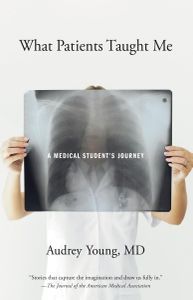
Author Audrey Young was just 23-years-old when she took care of her first dying patient. In What Patients Taught Me, she writes of this life-altering experience and of the other struggles she faced in her journey to become a good doctor—from exhausting 36-hour shifts to a perilous rescue mission in an Eskimo village. As she travels to small rural communities throughout the world, she attends to terminal illness, AIDS, tuberculosis, and premature birth, coming face-to-face with mortality and the medical, personal, and socioeconomic dilemmas of her patients.
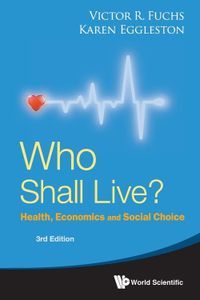
Since the first edition of Who Shall Live? (1974) over 100,000 students, teachers, physicians, and general readers from more than a dozen fields have found this book to be a reader-friendly, authoritative introduction to economic concepts applied to health and medical care. Fuchs provides clear explanations and memorable examples of the importance of the non-medical determinants of health, the dominant role of physicians in health care expenditures, the necessity of choices about health at the individual and societal levels, and many other compelling themes.
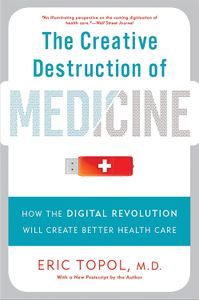
Mobile technology has transformed our lives, and personal genomics is revolutionizing biology. But despite the availability of technologies that can provide wireless, personalized health care at lower cost, the medical community has resisted change. In The Creative Destruction of Medicine, Eric Topol-one of the nation's top physicians-calls for consumer activism to demand innovation and the democratization of medical care. The Creative Destruction of Medicine is the definitive account of the coming disruption of medicine, written by the field's leading voice.
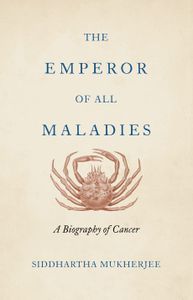
The story of cancer is a story of human ingenuity, resilience, and perseverance, but also of hubris, paternalism, and misperception. Mukherjee recounts centuries of discoveries, setbacks, victories, and deaths, told through the eyes of his predecessors and peers, training their wits against an infinitely resourceful adversary that, just three decades ago, was thought to be easily vanquished in an all-out “war against cancer.” The book reads like a literary thriller with cancer as the protagonist.
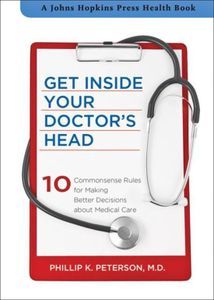
Get Inside Your Doctor’s Head provides advice about such questions as when to seek treatment, when to get another opinion, and when to let time take its course. Turn to the Ten Rules when you are weighing your doctor’s recommendations about diagnostic tests and treatments and use them to communicate more effectively with your doctor. As with all rules, the Ten Rules of Internal Medicine have occasional exceptions―and when evidence suggests that you are an exception, the relevant rule should be broken. Follow the Ten Rules to make decisions in the increasingly complicated medical world when you need guidance about health matters for yourself and your loved ones.
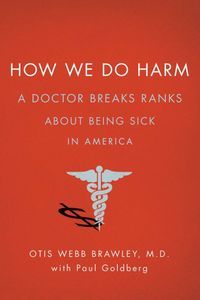
How We Do Harm exposes the underbelly of healthcare today―the overtreatment of the rich, the under treatment of the poor, the financial conflicts of interest that determine the care that physicians' provide, insurance companies that don't demand the best (or even the least expensive) care, and pharmaceutical companies concerned with selling drugs, regardless of whether they improve health or do harm.
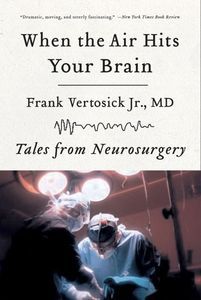
With poignant insight and humor, Frank Vertosick Jr., MD, describes some of the greatest challenges of his career, including a six-week-old infant with a tumor in her brain, a young man struck down in his prime by paraplegia, and a minister with a .22-caliber bullet lodged in his skull. Told through intimate portraits of Vertosick’s patients and unsparing yet fascinatingly detailed descriptions of surgical procedures, When the Air Hits Your Brain―the culmination of decades spent struggling to learn an unforgiving craft―illuminates both the mysteries of the mind and the realities of the operating room.
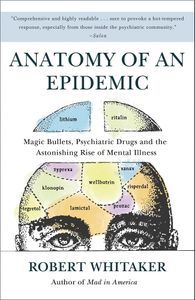
In this astonishing and startling book, award-winning science and history writer Robert Whitaker investigates a medical mystery: Why has the number of disabled mentally ill in the United States tripled over the past two decades? Every day, 1,100 adults and children are added to the government disability rolls because they have become newly disabled by mental illness, with this epidemic spreading most rapidly among our nation's children. What is going on?
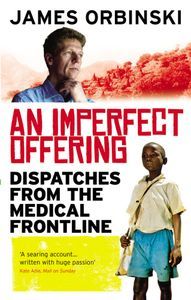
In 1988, James Orbinski, then a medical student in his twenties, embarked on a year-long research trip to Rwanda, a trip that would change who he would be as a doctor and as a man. Investigating the conditions of pediatric AIDS in Rwanda, James confronted widespread pain and suffering, much of it preventable, much of it occasioned by political and economic corruption. Fuelled by the injustice of what he had seen in Rwanda, Orbinski helped establish the Canadian chapter of Médecins Sans Frontières (Doctors Without Borders/MSF). As a member of MSF he travelled to Peru during a cholera epidemic, to Somalia during the famine and civil war, and to Jalalabad, Afghanistan.
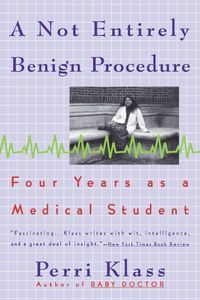
Acclaimed pediatrician, journalist, and novelist Perri Klass offers a provocative look at the ups and downs of medical school - from those first exams to the day she became a doctor. In a direct, candid style, Klass shares what it is like to be a first-time mother while attending med school; the unique lingo of the med student; how to deal with every bodily fluid imaginable; and the humor and heartbreak of working with patients. With this collection of essays, Klass established herself as a go-to voice for a generation of med students and doctors, with her frank and witty perspective. Klass also brings a proven ability to make the medical world accessible to the lay reader, through her extensive literary and journalistic experience.
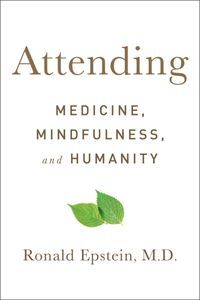
In Attending, his first book, Dr. Epstein builds on his world-renowned, innovative programs in mindful practice and uses gripping and deeply human clinical stories to give patients a language to describe what they value most in health care and to outline a road map for doctors and other health care professionals to refocus their approach to medicine. Drawing on his clinical experiences and current research, and exploring four foundations of mindfulness—Attention, Curiosity, Beginner’s Mind, and Presence—Dr. Epstein introduces a revolutionary concept: by looking inward, health care practitioners can grow their capacity to provide high-quality care and the resilience to be there when their patients need them.The commodification of health care has shifted doctors’ focus away from the healing of patients to the bottom line. Clinician burnout is at an all-time high. Attending is the antidote. With compassion and intelligence, Epstein offers a crucial, timely book that shows us how we can restore humanity to medicine, guides us toward a better overall quality of care, and reminds us of what matters most.
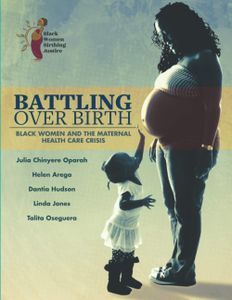
Battling Over Birth, a new human rights report from Black Women Birthing Justice, shares stories from over 100 women who recently gave birth in California. The report reveals the culture of fear and coercion that has transformed birth into a battleground, a deep lack of trust of our hospitals, and a broken maternal health-care system that fails too many black women. The report shakes up our understanding of where state violence happens, and who it happens to; putting the human rights spotlight onto a system that is often unaccountable to black communities. Battling Over Birth also provides solutions. The report shares positive experiences by black women, and identifies best practices based on their experiences. It makes a series of recommendations, including community accountability boards to hold hospitals accountable; increased access to midwifery and doula-care; recruitment and training of more health-care professionals of color; culturally-competent, empowering prenatal and postpartum care; greater access to home birth and birth centers; and a sharp reduction in the use of C-sections.
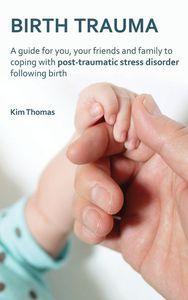
Birth ought to be a joyful experience: for some women, however, it is anything but. Women who have experienced a medical emergency during birth often find that the memory of it doesn't go away just because a healthy baby has been delivered. They experience the symptoms of post-traumatic stress disorder: flashbacks, sleeplessness, nightmares or extreme anxiety. Some go out of their way to avoid being reminded of the birth, and they may find it difficult to bond with their baby. Post-traumatic stress disorder after birth, known more simply as 'birth trauma', affects at least 10,000 women every year in England and Wales. Yet the condition is poorly misunderstood and women suffering from birth trauma often do not receive the treatment or support they need. They may be misdiagnosed as suffering from postnatal depression, and many find that friends and family, instead of being supportive, simply tell them to pull themselves together. This valuable and fascinating book explains everything you and your family and friends need to know about birth trauma: what causes it, how it affects your personal relationships, how to treat it and where to find support. Using the powerful personal stories of women who have suffered birth trauma and overcame it, this book shows that it is possible to go through this difficult experience and come out the other side.

There is a global crisis in maternal health care for black women. In the United States, black women are over three times more likely to perish from pregnancy-related complications than white women; their babies are half as likely to survive the first year. Many black women experience policing, coercion, and dis empowerment during pregnancy and childbirth and are disconnected from alternative birthing traditions. This book places black women's voices at the center of the debate on what should be done to fix the broken maternity system and foregrounds black women's agency in the emerging birth justice movement. Mixing scholarly, activist, and personal perspectives, the book shows readers how they too can change lives, one birth at a time.
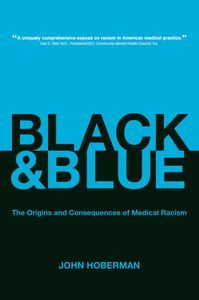
Black & Blue penetrates the physician’s private sphere where racial fantasies and misinformation distort diagnoses and treatments. Doctors have always absorbed the racial stereotypes and folkloric beliefs about racial differences that permeate the general population. Within the world of medicine this racial folklore has infiltrated all of the medical sub-disciplines, from cardiology to gynecology to psychiatry. Doctors have thus imposed white or black racial identities upon every organ system of the human body, along with racial interpretations of black children, the black elderly, the black athlete, black musicality, black pain thresholds, and other aspects of black minds and bodies. The American medical establishment does not readily absorb either historical or current information about medical racism. For this reason, racial enlightenment will not reach medical schools until the current race-aversive curricula include new historical and sociological perspectives.
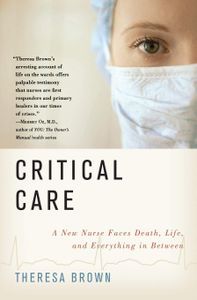
In her former career as an English professor, Theresa Brown had been shielded from the harsh reality of death. That all changed the day she decided to become an oncology nurse. In Critical Care, Theresa writes powerfully and honestly about her first year on the hospital floor. With great compassion and a disarming sense of humor, she shares the trials and triumphs of her patients and comes to realize that caring for a patient means much more than simply treating a disease. Deeply moving and, at times, sobering, Critical Care sheds light on the issues of mortality and meaning in our lives.
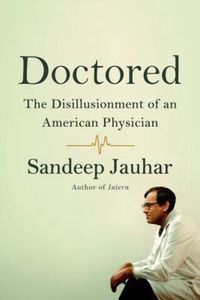
Hoping for the stability he needs to start a family, Jauhar accepts a position at a massive teaching hospital on the outskirts of Queens. With a decade's worth of elite medical training behind him, he is eager to settle down and reap the rewards of countless sleepless nights. Instead, he is confronted with sobering truths. Doctors' morale is low and getting lower. Blatant cronyism determines patient referrals, corporate ties distort medical decisions, and unnecessary tests are routinely performed in order to generate income. Meanwhile, a single patient in Jauhar's hospital might see fifteen specialists in one stay and still fail to receive a full picture of his actual condition. Provoked by his unsettling experiences, Jauhar has written an introspective memoir that is also an impassioned plea for reform. With American medicine at a crossroads, "Doctored "is the important work of a writer unafraid to challenge the establishment and incite controversy.
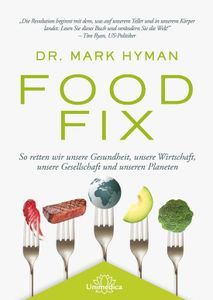
What we eat has tremendous implications not just for our waistlines, but also for the planet, society, and the global economy. What we do to our bodies, we do to the planet; and what we do to the planet, we do to our bodies. In Food Fix, #1 bestselling author Mark Hyman explains how our food and agriculture policies are corrupted by money and lobbies that drive our biggest global crises: the spread of obesity and food-related chronic disease, climate change, poverty, violence, educational achievement gaps, and more. Pairing the latest developments in nutritional and environmental science with an unflinching look at the dark realities of the global food system and the policies that make it possible, Food Fix is a hard-hitting manifesto that will change the way you think about - and eat - food forever, and will provide solutions for citizens, businesses, and policy makers to create a healthier world, society, and planet.
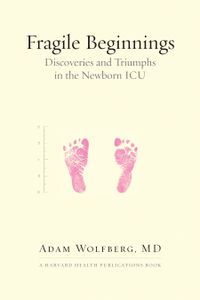
Half a million babies are born prematurely in the United States every year. In this gripping medical narrative, Dr. Adam Wolfberg brings readers into the complex world of newborn intensive care, where brilliant but imperfect doctors do all they can to coax life into their tiny, injured patients. As a specialist in high-risk obstetrics and the father of a child born prematurely, Wolfberg explores the profound questions raised by such fragile beginnings, both from the front lines of the NICU and from his daughter’s bedside.
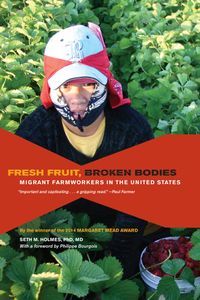
Fresh Fruit, Broken Bodies provides an intimate examination of the everyday lives and suffering of Mexican migrants in our contemporary food system. An anthropologist and MD in the mold of Paul Farmer and Didier Fassin, Holmes shows how market forces, anti-immigrant sentiment, and racism undermine health and health care. Holmes’s material is visceral and powerful. He trekked with his companions illegally through the desert into Arizona and was jailed with them before they were deported. He lived with indigenous families in the mountains of Oaxaca and in farm labor camps in the U.S., planted and harvested corn, picked strawberries, and accompanied sick workers to clinics and hospitals. This “embodied anthropology” deepens our theoretical understanding of the ways in which social inequalities and suffering come to be perceived as normal and natural in society and in health care.
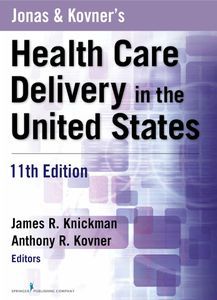
This fully updated and revised 11th edition of a highly esteemed survey and analysis of health care delivery in the United States keeps pace with the rapid changes that are reshaping our system. Fundamentally, this new edition presents the realities that impact our nation’s achievement of the so-called Triple Aim: better health and better care at a lower cost. It addresses challenges and responses to the Affordable Care Act (ACA), the implementation of Obamacare, and many new models of care designed to replace outmoded systems. Leading scholars, practitioners, and educators within population health and medical care present the most up-to-date evidence-based information on health disparities, vulnerable populations, and immigrant health; nursing workforce challenges; new information technology; preventive medicine; emerging approaches to control health care costs; and much more.
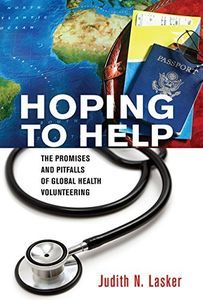
Overseas volunteering has exploded in numbers and interest in the last couple of decades. Every year, hundreds of thousands of people travel from wealthier to poorer countries to participate in short-term volunteer programs focused on health services. Hoping to Help is the first book to offer a comprehensive assessment of global health volunteering, based on research into how it currently operates, its benefits and drawbacks, and how it might be organized to contribute most effectively. Given the enormous human and economic investment in these activities, it is essential to know more about them and to understand the advantages and disadvantages for host communities. Most people assume that poor communities benefit from the goodwill and skills of the volunteers. Volunteer trips are widely advertised as a means to "give back" and "make a difference." In contrast, some claim that health volunteering is a new form of colonialism, designed to benefit the volunteers more than the host communities. Others focus on unethical practices and potential harm to the presumed "beneficiaries." Judith N. Lasker evaluates these opposing positions and relies on extensive research―interviews with host country staff members, sponsor organization leaders, and volunteers, a national survey of sponsors, and participant observation―to identify best and worst practice.
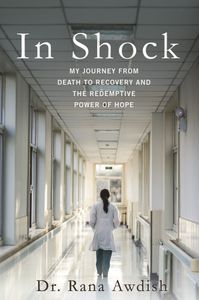
In Shock is a riveting first-hand account from a young critical care physician, who in the passage of a moment is transfigured into a dying patient. This transposition, coincidentally timed at the end of her medical training, instantly lays bare the vast chasm between the conventional practice of medicine and the stark reality of the prostrate patient. Hauntingly perceptive and beautifully written, it allows the reader to transform alongside her, and watch what she discovers in our carefully cultivated, yet often misguided standard of care. The author demonstrates through engaging narrative and laser-sharp wit how the unbearable is borne. She comes to understand the fatal flaws in her profession and in her own past actions as a physician. She also achieves, through unflinching presence, a crystalline vision of a new and better possibility.
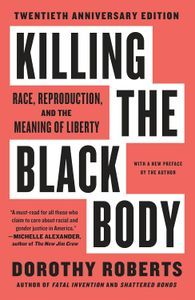
In "Killing the Black Body," Dorothy Roberts gives a powerful and authoritative account of the on-going assault - both figurative and literal - waged by the American government and our society on the reproductive rights of Black women. From an intersection of charged vectors (race, gender, motherhood, abortion, welfare, adoption, and the law), Roberts addresses in her impassioned book such issues as: the notion of prenatal property imposed upon slave women by white masters; the unsavory association between birth control champion Margaret Sanger and the eugenics movement of the 1920s; the coercive sterilization of Black women (many of whom were unaware that they had undergone the procedure) under government welfare programs as late as the 1970s; the race and class implications of distributing risky, long-acting contraceptives, such as Norplant, through Medicaid; the rendering of reproduction as a crime of prosecuting women who expose their fetuses to drugs; the controversy over transracial adoption; the welfare debate (who should pay for reproduction?); and the promotion of the new birth technology (in vitro fertilization and egg donation) to serve infertile white couples.
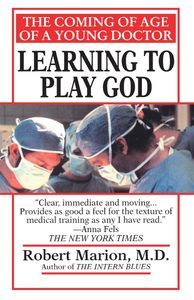
In the course of twenty gripping, illuminating, and extraordinarily candid stories, Dr. Marion reveals the dehumanizing, slightly insane, and often brutal process of medical training. You will experience not only the intense pressure and chronic exhaustion of the doctor-to-be, but also the price the patient must often pay. While each story stands alone as an adventure in medicine, taken together they are a call to change. With profound eloquence and compassion, Dr. Marion explores ways in which to assure that humanity and idealism survive the grueling and destructive path to technical competency.
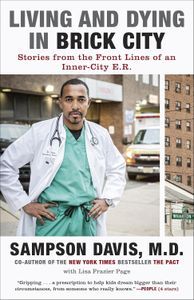
Sampson Davis is best known as one of three friends from inner-city Newark who made a pact in high school to become doctors. Dr. Davis looks at the healthcare crisis in the inner city from a rare perspective: as a doctor who works on the front line of emergency medical care in the community where he grew up, and as a member of that community who has faced the same challenges as the people he treats every day. He also offers invaluable practical advice for those living in such communities, where conditions like asthma, heart disease, stroke, obesity, and AIDS are disproportionately endemic. With empathy and hard-earned wisdom, Living and Dying in Brick City presents an urgent picture of medical care in our cities. It is an important resource guide for anyone at risk, anyone close to those at risk, and anyone who cares about the fate of our cities.
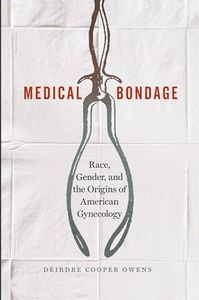
The accomplishments of pioneering doctors such as John Peter Mettauer, James Marion Sims, and Nathan Bozeman are well documented. It is also no secret that these nineteenth-century gynecologists performed experimental caesarean sections, ovariectomies, and obstetric fistula repairs primarily on poor and powerless women. Medical Bondage breaks new ground by exploring how and why physicians denied these women their full humanity yet valued them as “medical superbodies” highly suited for medical experimentation. In Medical Bondage, Cooper Owens examines a wide range of scientific literature and less formal communications in which gynecologists created and disseminated medical fictions about their patients, such as their belief that black enslaved women could withstand pain better than white “ladies.” Even as they were advancing medicine, these doctors were legitimizing, for decades to come, groundless theories related to whiteness and blackness, men and women, and the inferiority of other races or nationalities. Medical Bondage moves between southern plantations and northern urban centers to reveal how nineteenth-century American ideas about race, health, and status influenced doctor-patient relationships in sites of healing like slave cabins, medical colleges, and hospitals. It also retells the story of black enslaved women and of Irish immigrant women from the perspective of these exploited groups and thus restores for us a picture of their lives.
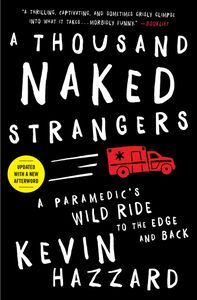
In the aftermath of 9/11 Kevin Hazzard felt that something was missing from his life—his days were too safe, too routine. A failed salesman turned local reporter, he wanted to test himself, see how he might respond to pressure and danger. He signed up for emergency medical training and became, at age twenty-six, a newly minted EMT running calls in the worst sections of Atlanta. His life entered a different realm—one of blood, violence, and amazing grace. Thoroughly intimidated at first and frequently terrified, he experienced on a nightly basis the adrenaline rush of walking into chaos. But in his downtime, Kevin reflected on how people’s facades drop away when catastrophe strikes. As his hours on the job piled up, he realized he was beginning to see into the truth of things. There is no pretense five beats into a chest compression, or in an alley next to a crack den, or on a dimly lit highway where cars have collided. Eventually, what had at first seemed impossible happened: Kevin acquired mastery. And in the process he was able to discern the professional differences between his freewheeling peers, what marked each—as he termed them—as “a tourist,” “true believer,” or “killer.”
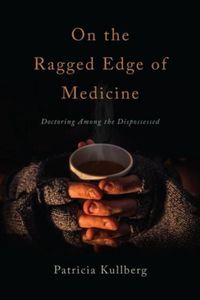
On the Ragged Edge of Medicine offers a glimpse into a medical practice for the homeless and urban poor. Told through fifteen patient vignettes, and drawn from the author's decades of experience in Portland, Oregon, this revealing memoir illuminates the impact of poverty on the delivery of health services and the ways in which people adapt and survive (or don't survive) in conditions of abuse and deprivation. Kullberg's stories show the direct and sometimes devastating effects of poverty on public health, poignantly demonstrating that medicine is as much a social enterprise as a scientific one.
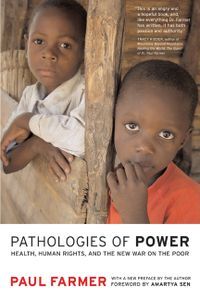
Pathologies of Power uses harrowing stories of life―and death―in extreme situations to interrogate our understanding of human rights. Paul Farmer, a physician and anthropologist with twenty years of experience working in Haiti, Peru, and Russia, argues that promoting the social and economic rights of the world’s poor is the most important human rights struggle of our times. With passionate eyewitness accounts from the prisons of Russia and the beleaguered villages of Haiti and Chiapas, this book links the lived experiences of individual victims to a broader analysis of structural violence.
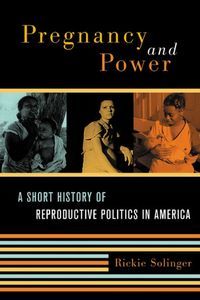
A sweeping chronicle of women's battles for reproductive freedom throughout American history, Pregnancy and Power explores the many forces—social, racial, economic, and political—that have shaped women’s reproductive lives in the United States.Leading historian Rickie Solinger argues that a woman’s control over her body involves much more than the right to choose an abortion. Reproductive politics were at play when slaveholders devised breeding schemes, when the U.S. government took Indian children from their families in the nineteenth century, and when doctors pressed Latina women to be sterilized in the 1970s. Tracing the diverse plot lines of women’s reproductive lives throughout American history, Solinger redefines the idea of reproductive freedom, putting race and class at the center of the effort to control sex and pregnancy in America over time.
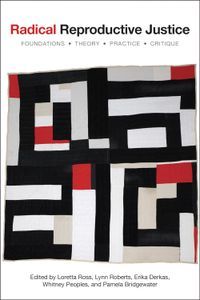
Expanding the social justice discourse surrounding "reproductive rights" to include issues of environmental justice, incarceration, poverty, disability, and more, this crucial anthology explores the practical applications for activist thought migrating from the community into the academy.
Radical Reproductive Justice assembles two decades’ of work initiated by SisterSong Women of Color Health Collective, creators of the human rights-based “reproductive justice” framework to move beyond polarized pro-choice/pro-life debates. Rooted in Black feminism and built on intersecting identities, this revolutionary framework asserts a woman's right to have children, to not have children, and to parent and provide for the children they have.
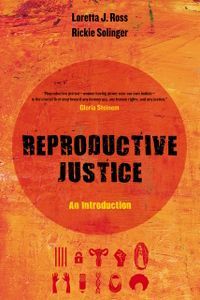
Reproductive Justice is a first-of-its-kind primer that provides a comprehensive yet succinct description of the field. Written by two legendary scholar-activists, Reproductive Justice introduces students to an intersectional analysis of race, class, and gender politics. Loretta J. Ross and Rickie Solinger put the lives and lived experience of women of color at the center of the book and use a human rights analysis to show how the discussion around reproductive justice differs significantly from the pro-choice/anti-abortion debates that have long dominated the headlines and mainstream political conflict. Arguing that reproductive justice is a political movement of reproductive rights and social justice, the authors illuminate, for example, the complex web of structural obstacles a low-income, physically disabled woman living in West Texas faces as she contemplates her sexual and reproductive intentions. In a period in which women’s reproductive lives are imperiled, Reproductive Justice provides an essential guide to understanding and mobilizing around women’s human rights in the twenty-first century.
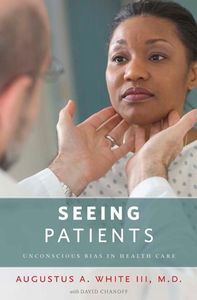
This book by a pioneering black surgeon takes on one of the few critically important topics that haven’t figured in the heated debate over health care reform―the largely hidden yet massive injustice of bias in medical treatment. Growing up in Jim Crow–era Tennessee and training and teaching in overwhelmingly white medical institutions, Gus White witnessed firsthand how prejudice works in the world of medicine. And while race relations have changed dramatically, old ways of thinking die hard. In Seeing Patients White draws upon his experience in startlingly different worlds to make sense of the unconscious bias that riddles medical treatment, and to explore what it means for health care in a diverse twenty-first-century America. White and co-author David Chanoff use extensive research and interviews with leading physicians to show how subconscious stereotyping influences doctor-patient interactions, diagnosis, and treatment. Their book brings together insights from the worlds of social psychology, neuroscience, and clinical practice to define the issues clearly and, most importantly, to outline a concrete approach to fixing this fundamental inequity in the delivery of health care.
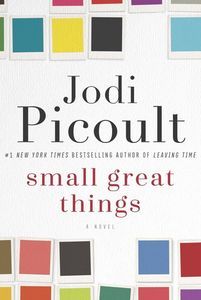
Ruth Jefferson is a labor and delivery nurse at a Connecticut hospital with more than twenty years’ experience. During her shift, Ruth begins a routine checkup on a newborn, only to be told a few minutes later that she’s been reassigned to another patient. The parents are white supremacists and don’t want Ruth, who is African American, to touch their child. The hospital complies with their request, but the next day, the baby goes into cardiac distress while Ruth is alone in the nursery. Does she obey orders or does she intervene? Ruth hesitates before performing CPR and, as a result, is charged with a serious crime. Kennedy McQuarrie, a white public defender, takes her case but gives unexpected advice: Kennedy insists that mentioning race in the courtroom is not a winning strategy. Conflicted by Kennedy’s counsel, Ruth tries to keep life as normal as possible for her family—especially her teenage son—as the case becomes a media sensation. As the trial moves forward, Ruth and Kennedy must gain each other’s trust, and come to see that what they’ve been taught their whole lives about others—and themselves—might be wrong. With incredible empathy, intelligence, and candor, Jodi Picoult tackles race, privilege, prejudice, justice, and compassion—and doesn’t offer easy answers.
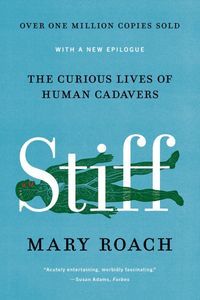
Stiff is an oddly compelling, often hilarious exploration of the strange lives of our bodies postmortem. For two thousand years, cadavers―some willingly, some unwittingly―have been involved in science's boldest strides and weirdest undertakings. In this fascinating account, Mary Roach visits the good deeds of cadavers over the centuries and tells the engrossing story of our bodies when we are no longer with them.
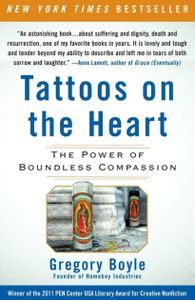
For twenty years, Father Gregory Boyle has run Homeboy Industries, a gang-intervention program located in the Boyle Heights neighborhood of Los Angeles—also known as the gang capital of the world. In Tattoos on the Heart, he has distilled his experience working in the ghetto into a breathtaking series of parables inspired by faith. From giant, tattooed Cesar, shopping at JC Penney fresh out of prison, you learn how to feel worthy of God’s love. From ten-year-old Pipi you learn the importance of being known and acknowledged. From Lulu you come to understand the kind of patience necessary to rescue someone from the dark—as Father Boyle phrases it, we can only shine a flashlight on a light switch in a darkened room. This is a motivating look at how to stay faithful in spite of failure, how to meet the world with a loving heart, and how to conquer shame with boundless, restorative love.
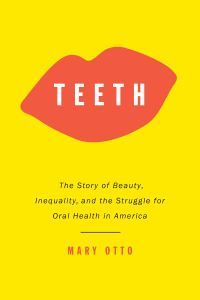
Teeth takes readers on a disturbing journey into America’s silent epidemic of oral disease, exposing the hidden connections between tooth decay and stunted job prospects, low educational achievement, social mobility, and the troubling state of our public health. Otto’s subjects include the pioneering dentist who made Shirley Temple and Judy Garland’s teeth sparkle on the silver screen and helped create the all-American image of “pearly whites”; Deamonte Driver, the young Maryland boy whose tragic death from an abscessed tooth sparked congressional hearings; and a marketing guru who offers advice to dentists on how to push new and expensive treatments and how to keep Medicaid patients at bay.
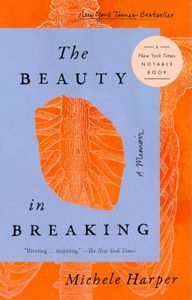
The Beauty in Breaking is the poignant true story of Harper’s journey toward self-healing. Each of the patients Harper writes about taught her something important about recuperation and recovery. How to let go of fear even when the future is murky. How to tell the truth when it’s simpler to overlook it. How to understand that compassion isn’t the same as justice. As she shines a light on the systemic disenfranchisement of the patients she treats as they struggle to maintain their health and dignity, Harper comes to understand the importance of allowing ourselves to make peace with the past as we draw support from the present. In this hopeful, moving, and beautiful book, she passes along the precious, necessary lessons that she has learned as a daughter, a woman, and a physician.
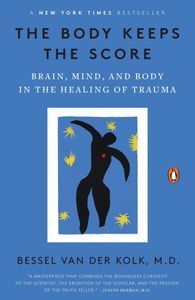
Trauma is a fact of life. Veterans and their families deal with the painful aftermath of combat; one in five Americans has been molested; one in four grew up with alcoholics; one in three couples have engaged in physical violence. Dr. Bessel van der Kolk, one of the world’s foremost experts on trauma, has spent over three decades working with survivors. In The Body Keeps the Score, he uses recent scientific advances to show how trauma literally reshapes both body and brain, compromising sufferers’ capacities for pleasure, engagement, self-control, and trust. He explores innovative treatments—from neurofeedback and meditation to sports, drama, and yoga—that offer new paths to recovery by activating the brain’s natural neuroplasticity. Based on Dr. van der Kolk’s own research and that of other leading specialists, The Body Keeps the Score exposes the tremendous power of our relationships both to hurt and to heal—and offers new hope for reclaiming lives.
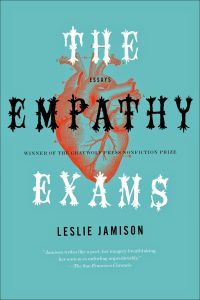
Beginning with her experience as a medical actor who was paid to act out symptoms for medical students to diagnose, Leslie Jamison's visceral and revealing essays ask essential questions about our basic understanding of others: How should we care about each other? How can we feel another's pain, especially when pain can be assumed, distorted, or performed? Is empathy a tool by which to test or even grade each other? By confronting pain―real and imagined, her own and others'―Jamison uncovers a personal and cultural urgency to feel. She draws from her own experiences of illness and bodily injury to engage in an exploration that extends far beyond her life, spanning wide-ranging territory―from poverty tourism to phantom diseases, street violence to reality television, illness to incarceration―in its search for a kind of sight shaped by humility and grace.
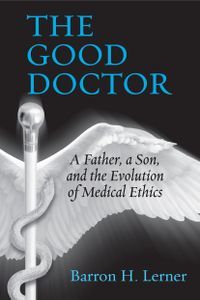
As a practicing physician and longtime member of his hospital’s ethics committee, Dr. Barron Lerner thought he had heard it all. But in the mid-1990s, his father, an infectious diseases physician, told him a stunning story: he had physically placed his body over an end-stage patient who had stopped breathing, preventing his colleagues from performing cardiopulmonary resuscitation, even though CPR was the ethically and legally accepted thing to do. Over the next few years, the senior Dr. Lerner tried to speed the deaths of his seriously ill mother and mother-in-law to spare them further suffering. These stories angered and alarmed the younger Dr. Lerner. But the elder Dr. Lerner’s journals, which he had kept for decades, showed the son how the father’s outdated paternalism had grown out of a fierce devotion to patient-centered medicine, which was rapidly disappearing. And they raised questions: Are paternalistic doctors just relics, or should their expertise be used to overrule patients and families that make ill-advised choices? Does the growing use of personalized medicine—in which specific interventions may be best for specific patients—change the calculus between autonomy and paternalism? And how can we best use technologies that were invented to save lives but now too often prolong death? In an era of high-technology medicine, spiraling costs, and health-care reform, these questions could not be more relevant.
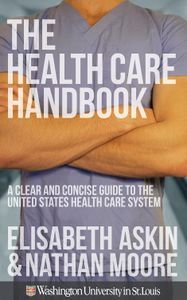
The Handbook is the one-stop guide to the people, organizations and industries that make up the U.S. healthcare system and major issues the system faces today. It is rigorously researched and scrupulously unbiased yet written in a conversational and humorous tone that’s a pleasure to read and illuminates the convoluted health care system and its many components. Each section of the Handbook includes an introduction to the key facts and foundations that make the healthcare system work along with balanced analyses of the major challenges and controversies within health care, including medical errors, government regulation, medical malpractice, and much more. Suggested readings are included for readers who wish to learn more about specific topics.
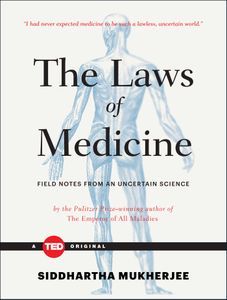
Over a decade ago, when Siddhartha Mukherjee was a young, exhausted, and isolated medical resident, he discovered a book that would forever change the way he understood the medical profession. The book, The Youngest Science, forced Dr. Mukherjee to ask himself an urgent, fundamental question: Is medicine a “science”? Sciences must have laws—statements of truth based on repeated experiments that describe some universal attribute of nature. But does medicine have laws like other sciences? Dr. Mukherjee has spent his career pondering this question—a question that would ultimately produce some of the most serious thinking he would do around the tenets of his discipline—culminating in The Laws of Medicine. In this important treatise, he investigates the most perplexing and illuminating cases of his career that ultimately led him to identify the three key principles that govern medicine.
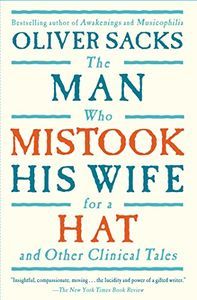
Oliver Sacks’s The Man Who Mistook His Wife for a Hat tells the stories of individuals afflicted with fantastic perceptual and intellectual aberrations: patients who have lost their memories and with them the greater part of their pasts; who are no longer able to recognize people and common objects; who are stricken with violent tics and grimaces or who shout involuntary obscenities; whose limbs have become alien; who have been dismissed as retarded yet are gifted with uncanny artistic or mathematical talents. If inconceivably strange, these brilliant tales remain, in Dr. Sacks’s splendid and sympathetic telling, deeply human. They are studies of life struggling against incredible adversity, and they enable us to enter the world of the neurologically impaired, to imagine with our hearts what it must be to live and feel as they do. A great healer, Sacks never loses sight of medicine’s ultimate responsibility: “the suffering, afflicted, fighting human subject.”
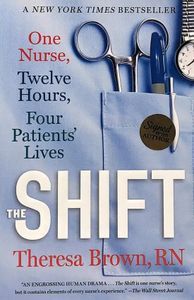
In a book as eye-opening as it is riveting, practicing nurse and regular contributor to the New York Times Theresa Brown invites us to experience not just a day in the life of a nurse but all the life that happens in just one day on a busy teaching hospital’s cancer ward. In the span of twelve hours, lives can be lost, life-altering treatment decisions made, and dreams fulfilled or irrevocably stolen. Every day, Theresa Brown holds these lives in her hands. On this day, there are four. Unfolding in real time under the watchful eyes of Theresa Brown--a dedicated nurse and an insightful chronicler of events--we are given an unprecedented view into the individual struggles as well as the larger truths about medicine in this country. By shift’s end, we have witnessed something profound about hope and humanity.
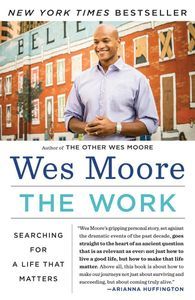
The Work is the story of how one young man traced a path through the world to find his life’s purpose. Wes Moore graduated from a difficult childhood in the Bronx and Baltimore to an adult life that would find him at some of the most critical moments in our recent history. In this insightful book, Moore shares the lessons he learned from people he met along the way. Moore also tells the stories of other twenty-first-century change-makers who’ve inspired him in his search. What their lives—and his own misadventures and moments of illumination—reveal is that our truest work happens when we serve others, at the intersection between our gifts and our broken world. That’s where we find the work that lasts. The Work will inspire readers to see how we can each find our own path to purpose and help create a better world.
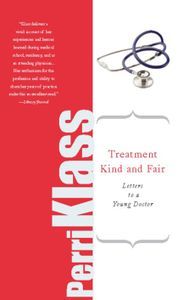
If you’ve ever sat on an examination table and wondered what is really going on in your doctor’s head, then this book is for you. New York Times contributor and beloved author Perri Klass addresses the primary issues in the life of any doctor and, by extension, the lives of those for whom they care. She explores the moral judgments of doctors, questions of death and physician-assisted suicide, the daily life of a doctor, doctors as patients, and more. Klass offers a fascinating glimpse inside the doctor’s office for aspiring physicians and medical buffs. Treatment Kind and Fair is also a must-read for anyone who’s ever been a patient.
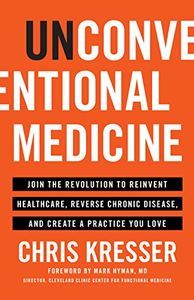
The world is facing the greatest healthcare crisis it has ever seen. Chronic disease is shortening our lifespan, destroying our quality of life, bankrupting governments, and threatening the health of future generations. Sadly, conventional medicine, with its focus on managing symptoms, has failed to address this challenge. The result is burned-out physicians, a sicker population, and a broken healthcare system.In Unconventional Medicine, Chris Kresser presents a plan to reverse this dangerous trend. He shows how the combination of a genetically aligned diet and lifestyle, functional medicine, and a lean, collaborative practice model can create a system that better serves the needs of both patients and practitioners.The epidemic of chronic illness can be stopped, if patients and practitioners can adapt.
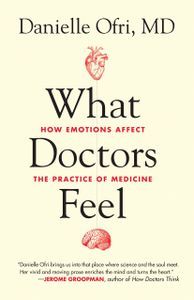
With her renowned eye for dramatic detail, Dr. Ofri takes us into the swirling heart of patient care, telling stories of caregivers caught up and occasionally torn down by the whirlwind life of doctoring. She admits to the humiliation of an error that nearly killed one of her patients and her forever fear of making another. She mourns when a beloved patient is denied a heart transplant. She tells the riveting stories of an intern traumatized when she is forced to let a newborn die in her arms, and of a doctor whose daily glass of wine to handle the frustrations of the ER escalates into a destructive addiction. But doctors don’t only feel fear, grief, and frustration. Ofri also reveals that doctors tell bad jokes about “toxic shock syndrome,” cope through gallows humor, find hope in impossible situations, and surrender to ecstatic happiness when they triumph over illness. The stories here reveal the undeniable truth that emotions have a distinct effect on how doctors care for their patients. For both clinicians and patients, understanding what doctors feel can make all the difference in giving and getting the best medical care.
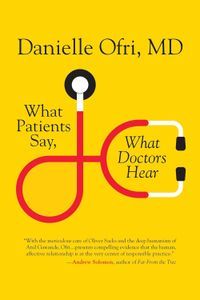
Can refocusing conversations between doctors and their patients lead to better health? Despite modern medicine’s infatuation with high-tech gadgetry, the single most powerful diagnostic tool is the doctor-patient conversation, which can uncover the lion’s share of illnesses. However, what patients say and what doctors hear are often two vastly different things. Patients, anxious to convey their symptoms, feel an urgency to “make their case” to their doctors. Doctors, under pressure to be efficient, multitask while patients speak and often miss the key elements. Add in stereotypes, unconscious bias, conflicting agendas, and fear of lawsuits and the risk of misdiagnosis and medical errors multiplies dangerously. Though the gulf between what patients say and what doctors hear is often wide, Dr. Danielle Ofri proves that it doesn’t have to be. Through the powerfully resonant human stories that Dr. Ofri’s writing is renowned for, she explores the high-stakes world of doctor-patient communication that we all must navigate. Reporting on the latest research studies and interviewing scholars, doctors, and patients, Dr. Ofri reveals how better communication can lead to better health for all of us.
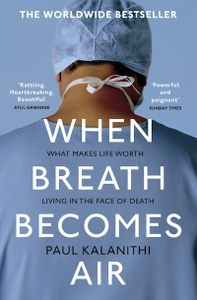
At the age of thirty-six, on the verge of completing a decade’s worth of training as a neurosurgeon, Paul Kalanithi was diagnosed with stage IV lung cancer. One day he was a doctor treating the dying, and the next he was a patient struggling to live. And just like that, the future he and his wife had imagined evaporated. When Breath Becomes Air chronicles Kalanithi’s transformation from a naïve medical student “possessed,” as he wrote, “by the question of what, given that all organisms die, makes a virtuous and meaningful life” into a neurosurgeon at Stanford working in the brain, the most critical place for human identity, and finally into a patient and new father confronting his own mortality. What makes life worth living in the face of death? What do you do when the future, no longer a ladder toward your goals in life, flattens out into a perpetual present? What does it mean to have a child, to nurture a new life as another fades away? These are some of the questions Kalanithi wrestles with in this profoundly moving, exquisitely observed memoir. Paul Kalanithi died in March 2015, while working on this book, yet his words live on as a guide and a gift to us all. “I began to realize that coming face to face with my own mortality, in a sense, had changed nothing and everything,” he wrote. “Seven words from Samuel Beckett began to repeat in my head: ‘I can’t go on. I’ll go on.’” When Breath Becomes Air is an unforgettable, life-affirming reflection on the challenge of facing death and on the relationship between doctor and patient, from a brilliant writer who became both.
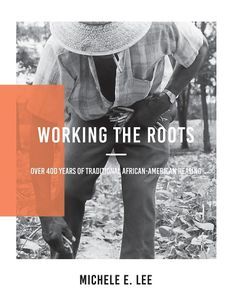
Working the Roots: Over 400 Years Of Traditional African American Healing is the result of first-hand interviews, conversations, and apprenticeships conducted and experienced by author Michele E. Lee over several years of living and studying in the rural South and in the West Coast regions of the United States. She combines a novelist’s keen ear for storytelling and dialogue and a healer’s understanding of folk medicine arts into a book that makes for both pleasant, interesting reading, and serves as a permanent household healing guide. Divided between sections on interviews of healers and their stories and a comprehensive collection of traditional African American medicines, remedies, and the many common ailments they were called upon to cure, Working The Roots is a valuable addition to African American history and American and African folk healing practices.
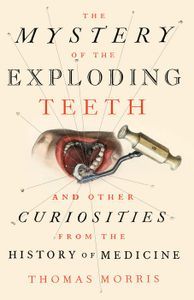
Beyond a series of anecdotes, these painfully amusing stories reveal a great deal about the evolution of modern medicine. Some show the medical profession hopeless in the face of ailments that today would be quickly banished by modern drugs; but others are heartening tales of recovery against the odds, patients saved from death by the devotion or ingenuity of a conscientious doctor.
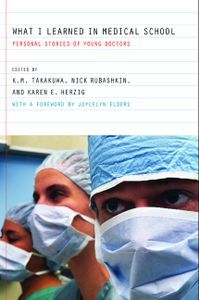
Like many an exclusive club, the medical profession subjects its prospective members to rigorous indoctrination: medical students are overloaded with work, deprived of sleep and normal human contact, drilled and tested and scheduled down to the last minute. Difficult as the regimen may be, for those who don't fit the traditional mold―white, male, middle-to-upper class, and heterosexual―medical school can be that much more harrowing. This riveting book tells the tales of a new generation of medical students―students whose varied backgrounds are far from traditional. Their stories will forever alter the way we see tomorrow's doctors
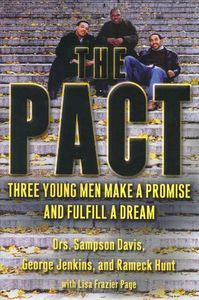
Chosen by Essence to be among the forty most influential African Americans, the three doctors grew up in the streets of Newark, facing city life’s temptations, pitfalls, even jail. But one day these three young men made a pact. They promised each other they would all become doctors, and stick it out together through the long, difficult journey to attaining that dream. Sampson Davis, George Jenkins, and Rameck Hunt are not only friends to this day—they are all doctors. This is a story about joining forces and beating the odds. A story about changing your life, and the lives of those you love most... together.
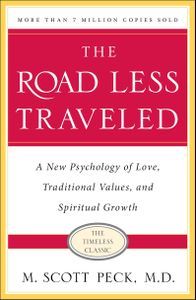
Written in a voice that is timeless in its message of understanding, The Road Less Traveled continues to help us explore the very nature of loving relationships and leads us toward a new serenity and fullness of life. It helps us learn how to distinguish dependency from love; how to become a more sensitive parent; and ultimately how to become one’s own true self.
Recognizing that, as in the famous opening line of his book, “Life is difficult” and that the journey to spiritual growth is a long one, Dr. Peck never bullies his readers, but rather guides them gently through the hard and often painful process of change toward a higher level of self-understanding.
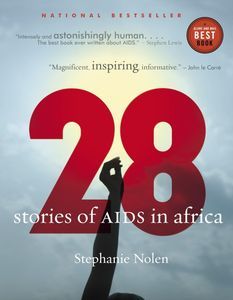
For the past six years, Stephanie Nolen has traced AIDS across Africa, and 28 is the result: an unprecedented, uniquely human portrait of the continent in crisis. Through riveting, anecdotal stories, she brings to life men, women, and children involved in every AIDS arena, making them familiar. And she explores the effects of an epidemic that well exceeds the Black Plague in scope, and the reasons why we must care about what happens.
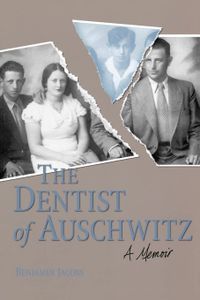
In 1941 Berek Jakubowicz (now Benjamin Jacobs) was deported from his Polish village and remained a prisoner of the Reich until the final days of the war. His possession of a few dental tools and rudimentary skills saved his life. Jacobs helped assemble V1 and V2 rockets in Buchenwald and Dora-Mittelbau; spent a year and a half in Auschwitz, where he was forced to remove gold teeth from corpses; and survived the RAF attack on three ocean liners turned prison camps in the Bay of Lubeck. This is his story.
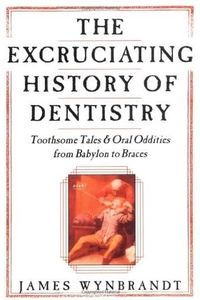
For those on both sides of the dreaded dentist's chair, James Wynbrandt has written a witty, colorful, and richly informative history of the art and science of dentistry. To all of those dental patients whose whine rises in tandem with that of the drill, take note: You would do well to stifle your terror and instead offer thanks to Apollonia, the patron saint of toothache sufferers, that you face only fleeting discomfort rather than the disfiguring distress, or slow agonizing death oft meted out by dental-care providers of the past. The transition from yesterday's ignorance, misapprehension, and superstition to the enlightened and nerve-deadened protocols of today has been a long, slow, and very painful process.
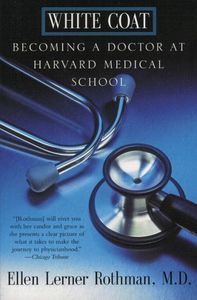
In White Coat, Ellen Rothman offers a vivid account of her four years at one of the best medical schools in the country, and opens the infamously closed door between patient and doctor. Touching on today's most important medical issues -- such as HMOs, AIDS, and assisted suicide -- the author navigates her way through despair, exhilaration, and a lot of exhaustion in Harvard's classrooms and Boston's hospitals to earn the indisputable title to which we entrust our lives.
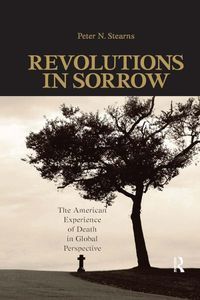
Huge changes have occurred in both the physical facts of death and in the cultural modes that guide our reactions to it. These changes also affect policy issues ranging from punishments for crimes to birth control to the conduct of war. This book explores the impacts of these changes upon both personal experience and social policy and places developments in the United States in an international comparative context.The book opens with an overview of traditional patterns of death and related cultural practices in agricultural civilizations, along with changes brought by Christianity. Attitudes and practices in colonial America are traced and compared to other societies. After setting this historical context, the book examines the immense changes that occurred in the nineteenth century: new cultural reactions to death, expressed in changing death rituals and cemetery design; the unprecedented reduction later in the century of infant mortality; the relocation of death from home to hospital; the redefinition of death as a taboo subject. The book's final segment relates changes in death culture and experience to the contentious debates of the twentieth century over the death penalty, abortion, and the practice of war. The book is designed to use historical and comparative perspectives to stimulate debate about the strengths and weaknesses of cultural practices and policies related to death.
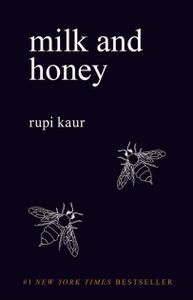
The book is divided into four chapters, and each chapter serves a different purpose. Deals with a different pain. Heals a different heartache. milk and honey takes readers through a journey of the most bitter moments in life and finds sweetness in them because there is sweetness everywhere if you are just willing to look.
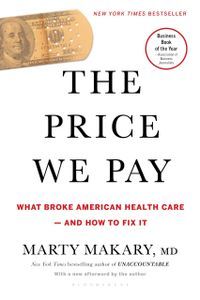
One in five Americans now has medical debt in collections and rising health care costs today threaten every small business in America. Dr. Makary, one of the nation's leading health care experts, travels across America and details why health care has become a bubble. Drawing from on-the-ground stories, his research, and his own experience, The Price We Pay paints a vivid picture of price-gouging, middlemen, and a series of elusive money games in need of a serious shake-up. Dr. Makary shows how so much of health care spending goes to things that have nothing to do with health and what you can do about it. Dr. Makary challenges the medical establishment to remember medicine’s noble heritage of caring for people when they are vulnerable.
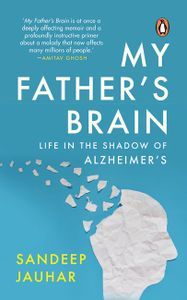
Almost six million Americans―about one in every ten over the age of sixty-five―have Alzheimer’s disease or related dementias, and this number is projected to more than double by 2050. What is it like to live with and amid this increasingly prevalent condition―an affliction that some fear more than death? In My Father’s Brain, the distinguished physician and author Sandeep Jauhar sets his father’s descent into Alzheimer’s alongside his own journey toward understanding this disease and how it might best be coped with, if not cured.
In an intimate memoir rich with humor and heartbreak, Jauhar relates how his immigrant father and extended family felt, quarreled, and found their way through the dissolution of a cherished life. Along the way, he lucidly exposes what happens in the brain as we age and our memory falters, and explores everything from the history of ancient Greece to the most cutting-edge neurological―and bioethical―research. Throughout, My Father’s Brain confronts the moral and psychological concerns that arise when family members must become caregivers, when children’s and parents’ roles reverse, and when we must accept unforeseen turns in our closest relationships―and in our understanding of what it is to have a self. The result is a work of essential insight into dementia, and into how scientists, caregivers, and all of us in an aging society are reckoning with the fallout.
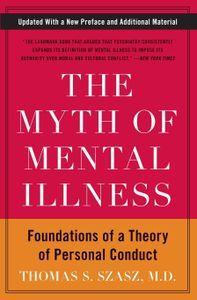
Thomas Szasz's classic book revolutionized thinking about the nature of the psychiatric profession and the moral implications of its practices. By diagnosing unwanted behavior as mental illness, psychiatrists, Szasz argues, absolve individuals of responsibility for their actions and instead blame their alleged illness. He also critiques Freudian psychology as a pseudoscience and warns against the dangerous overreach of psychiatry into all aspects of modern life.
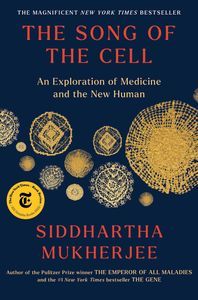
Mukherjee begins this magnificent story in the late 1600s, when a distinguished English polymath, Robert Hooke, and an eccentric Dutch cloth-merchant, Antonie van Leeuwenhoek looked down their handmade microscopes. What they saw introduced a radical concept that swept through biology and medicine, touching virtually every aspect of the two sciences, and altering both forever. It was the fact that complex living organisms are assemblages of tiny, self-contained, self-regulating units. Our organs, our physiology, our selves—hearts, blood, brains—are built from these compartments. Hooke christened them “cells.”
The discovery of cells—and the reframing of the human body as a cellular ecosystem—announced the birth of a new kind of medicine based on the therapeutic manipulations of cells. A hip fracture, a cardiac arrest, Alzheimer’s dementia, AIDS, pneumonia, lung cancer, kidney failure, arthritis, COVID pneumonia—all could be reconceived as the results of cells, or systems of cells, functioning abnormally. And all could be perceived as loci of cellular therapies.
Filled with writing so vivid, lucid, and suspenseful that complex science becomes thrilling, The Song of the Cell tells the story of how scientists discovered cells, began to understand them, and are now using that knowledge to create new humans. Told in six parts, and laced with Mukherjee’s own experience as a researcher, a doctor, and a prolific reader, The Song of the Cell is both panoramic and intimate—a masterpiece on what it means to be human.
